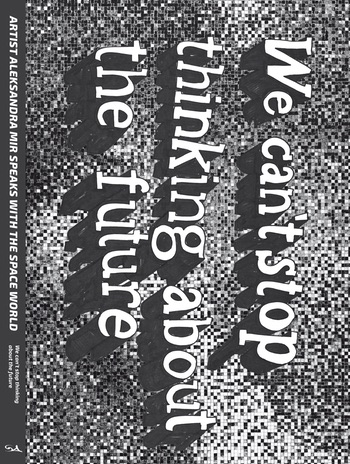Review: We Can’t Stop Thinking About The Futureby Jeff Foust
|
| Recalling a 2015 British space conference, she described the meeting’s atmosphere as “a mix between a Beyoncé concert and a megachurch gathering.” |
The book, though, is more than just about the artwork itself. Much of the book is a series of interviews Mir performed with scientists, engineers, and others involved in space in one capacity or another. They range from ESA Director-General Jan Wörner to scientists involved in the processing and presentation of astronomical images to engineers working on spacecraft. It’s an eclectic, but entertaining and enlightening, combination.
As an artist and an outsider to the space field, Mir brings curiosity and naiveté to her interviews, and a different way of looking at things. Recalling a 2015 British space conference where attendees were excited about astronaut Tim Peake’s upcoming space flight, she described the meeting’s atmosphere as “a mix between a Beyoncé concert and a megachurch gathering.” She then marvels at a scientist who, at that conference, called astronauts “glorified lab technicians” for carrying out experiments on the International Space Station. “It was the most radical thing I had seen in ages—and I work in the art world!”
Those interviews, though, do draw out some interesting discussions about science, technology, policy, and art as it applies to space. In one of those interviews, an astronomer describes how he intended to use the Hubble Space Telescope to observe a distant quasar. However, because of an error in the object’s coordinates, the telescope instead observed a different part of the sky, and saw nothing. The astronomer showed the resulting image, revealing only the variations in the detector itself and “the wash of very faint radiation coming from deep space.” That error delights Mir. “It is radical!” she exclaims, concluding the image “should be in a museum, next to all those other artworks that celebrate voids.”
The book, and the artwork, is certainly a different take on space, but one that offers a useful alternative perspective. (That perspective is presumably welcomed by at least some in the field: the exhibition was supported in part by the UK Space Agency and Science and Technology Facilities Council.) Spaceflight is more than just rockets and spacecraft: it’s also a mindset about how and why we want to travel into, or at least remotely study, the universe, one that goes beyond the hard science and technology. And even in failed efforts, like that mistaken Hubble image, one can find art, and insight.
